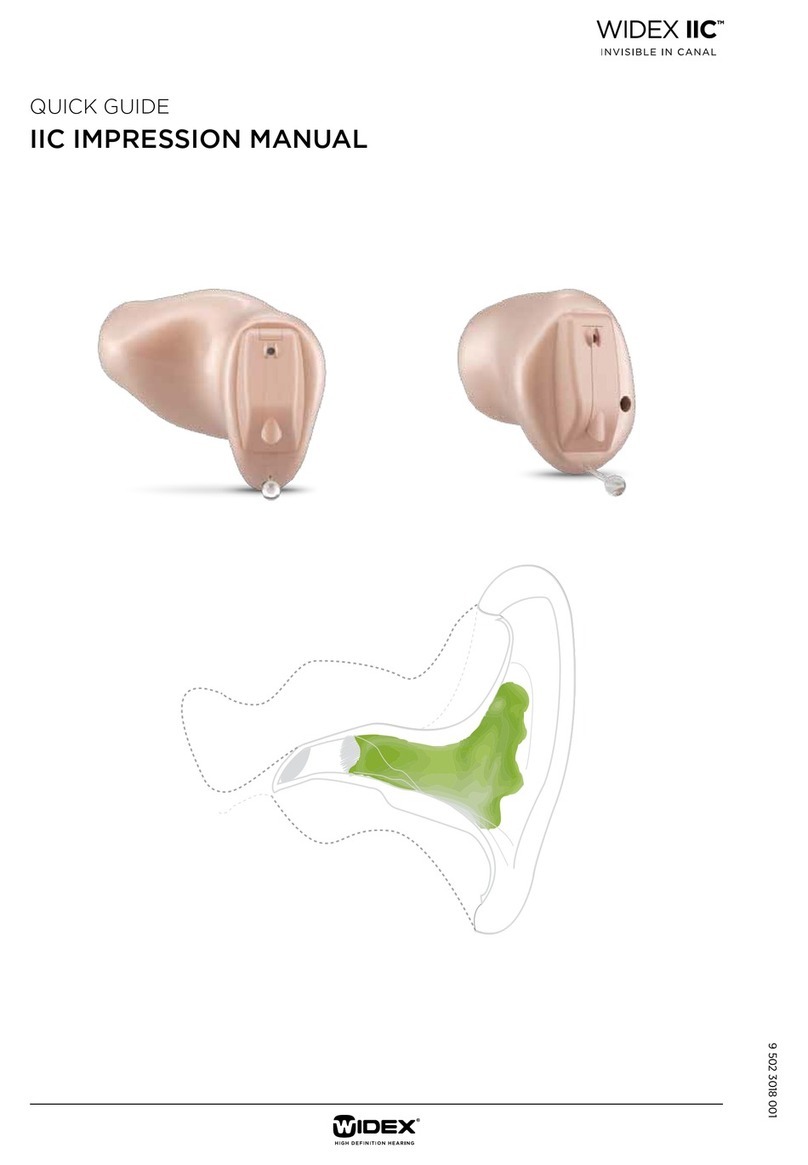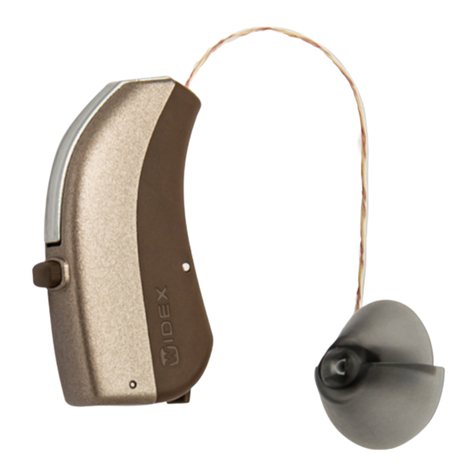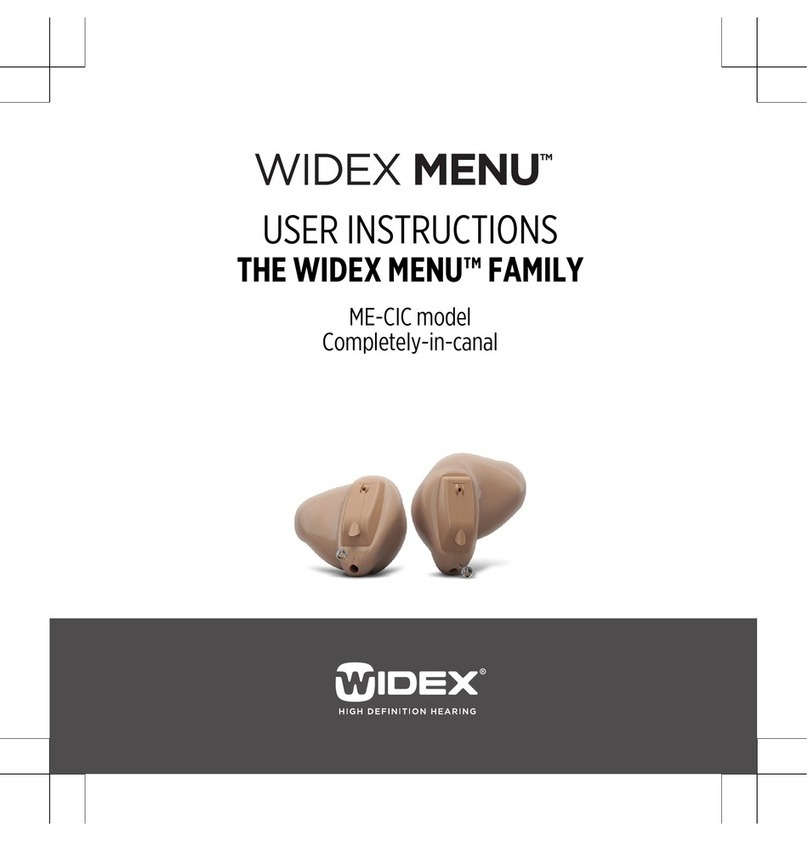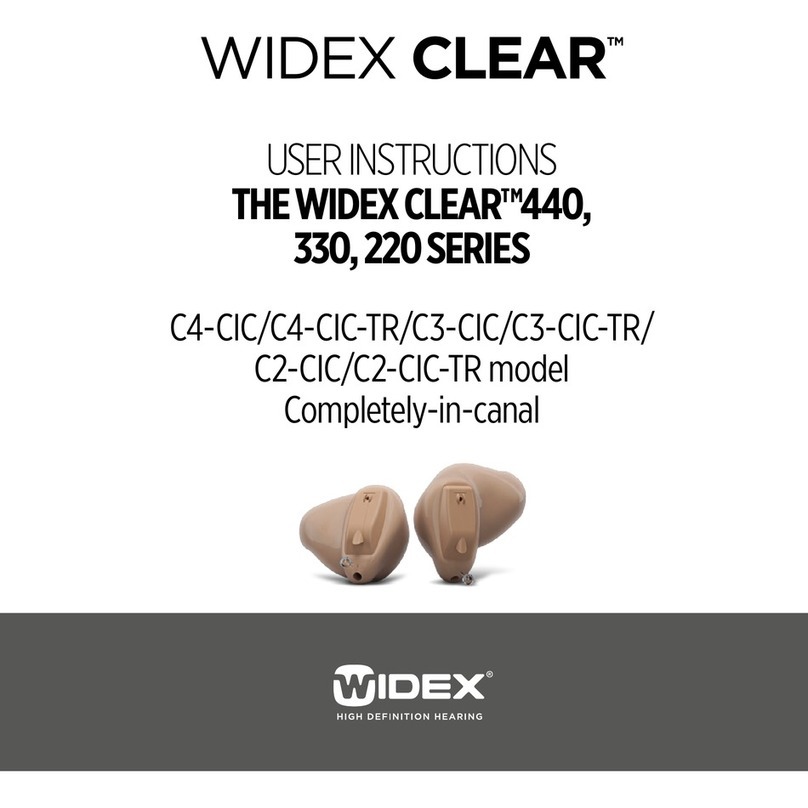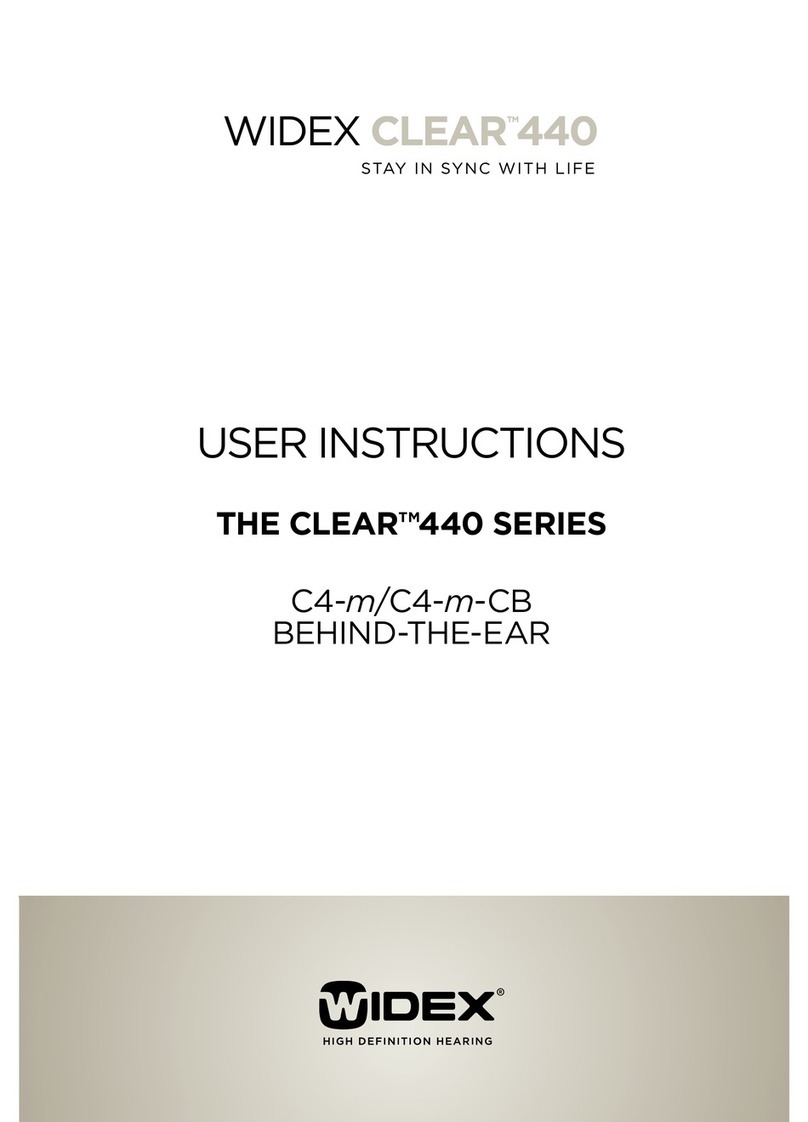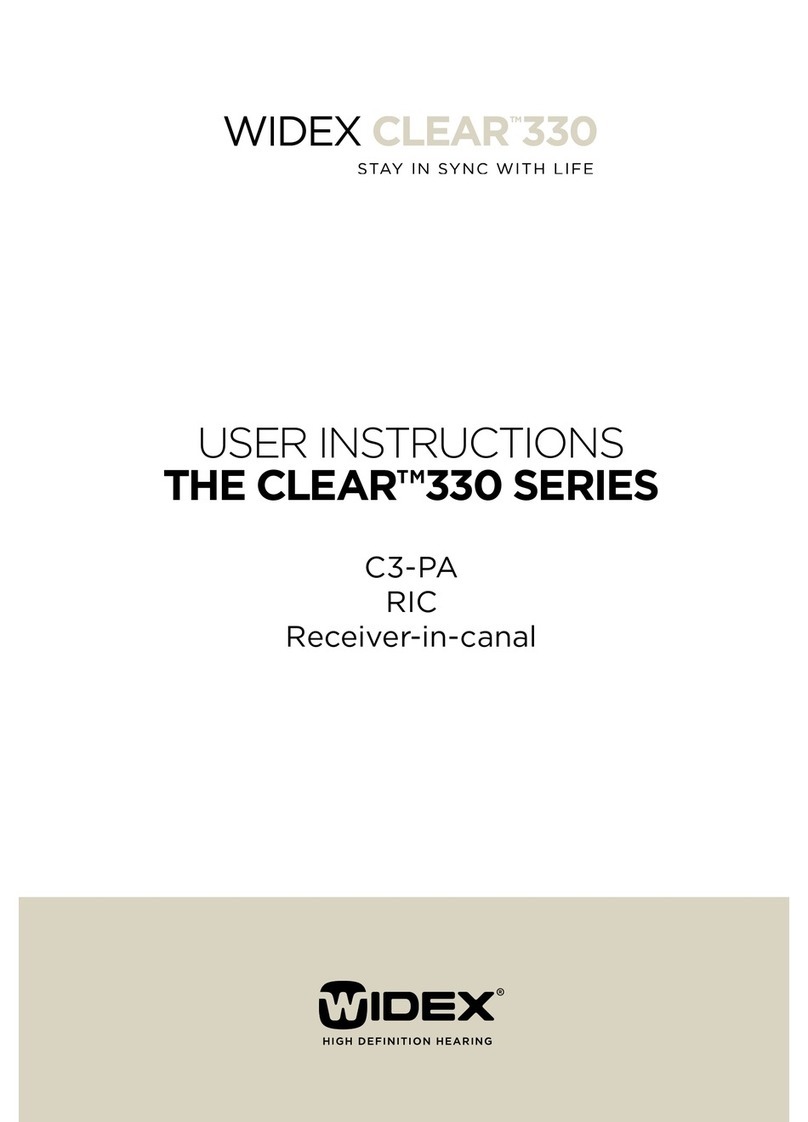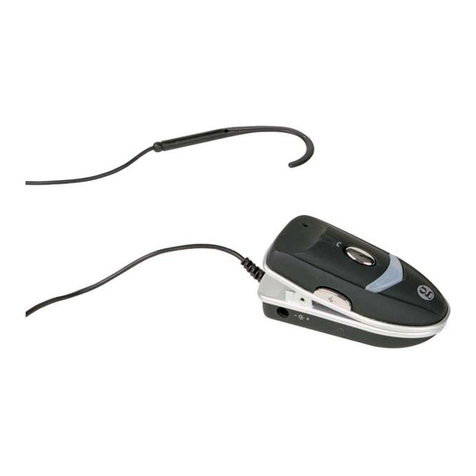10 11
Changing the battery
Before inserting a new battery in
your hearing aid, remember to re-
move the adhesive tab. Do not use
batteries on which there is a sticky
residue from the tab or other un-
wanted substance as this can block
the battery airholes.
Push the nail grip downwards to swing open the
battery drawer. The nail grip is located on the op-
posite side of the on/off switch at the bottom of
the hearing aid.
The battery must be placed with the plus (+) sign
visible, in accordance with the plus (+) sign on the
battery drawer. If the battery drawer does not
close easily, the battery is incorrectly inserted.
When changing batteries, hold the hearing aid
over a table or a carpet to make it easier to find a
dropped hearing aid or battery.
Exhausted batteries: If you hear four rapid
beep-tones while wearing your hearing aid, it is
an indication that you should change the battery
as soon as possible, as the battery is nearly ex-
hausted. Once the battery is totally exhausted,
the hearing aid will be completely silent.
Exactly how long the hearing aid will function
after the beep-tones varies from one case to an-
other. We recommend that you always have a
spare battery with you.
When you start using a new battery, it will usual-
ly take several seconds before the battery reaches
full performance. This is because the battery is
not activated until air gets inside the battery.
The rate at which a battery loses power is depen-
dent upon the circumstances under which the
battery is used. In some circumstances, the bat-
tery can drain so suddenly that the beep-tones for
low battery warning will only be partially pro-
duced or not be produced at all.
Never leave an exhausted battery in the hearing
aid. Exhausted batteries may leak, which could
damage your hearing aid.










